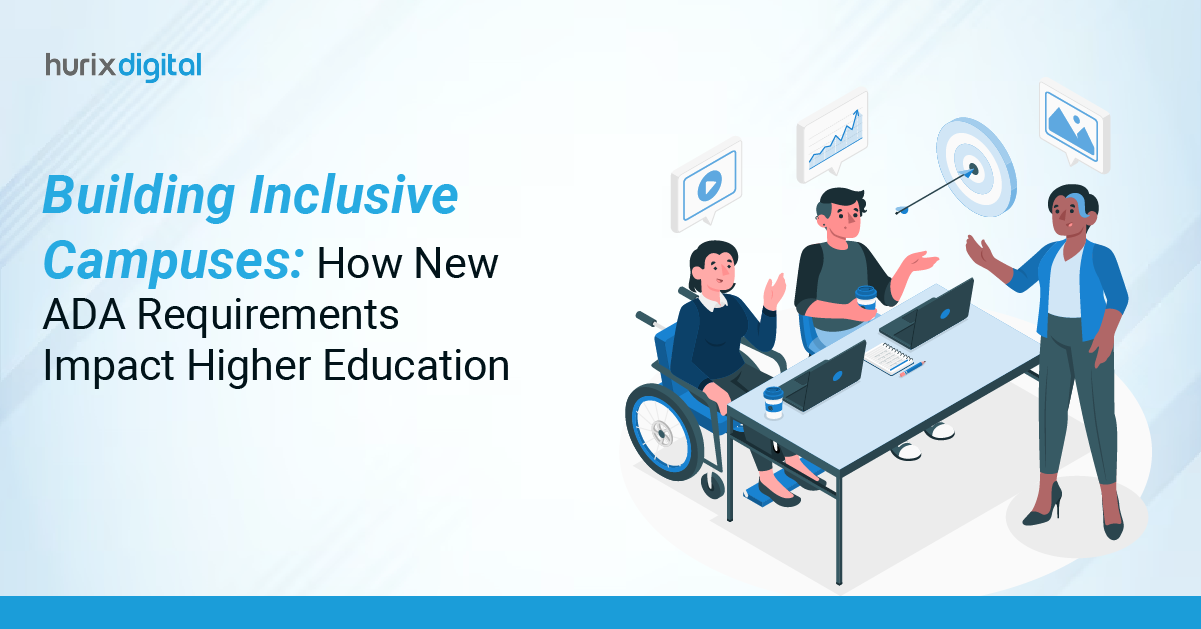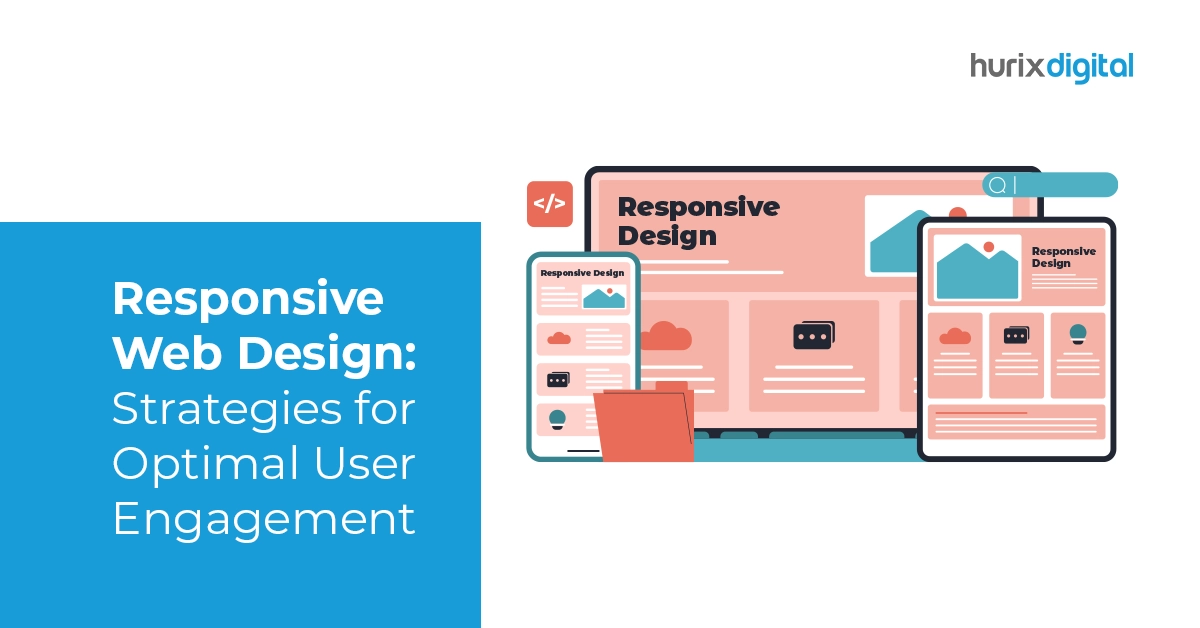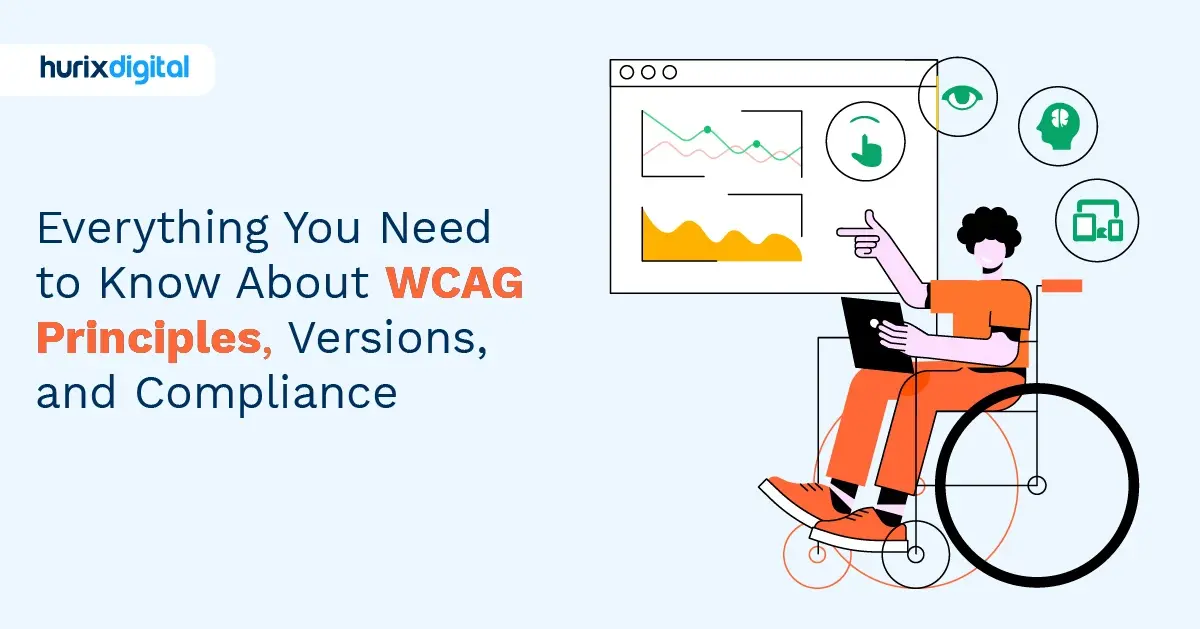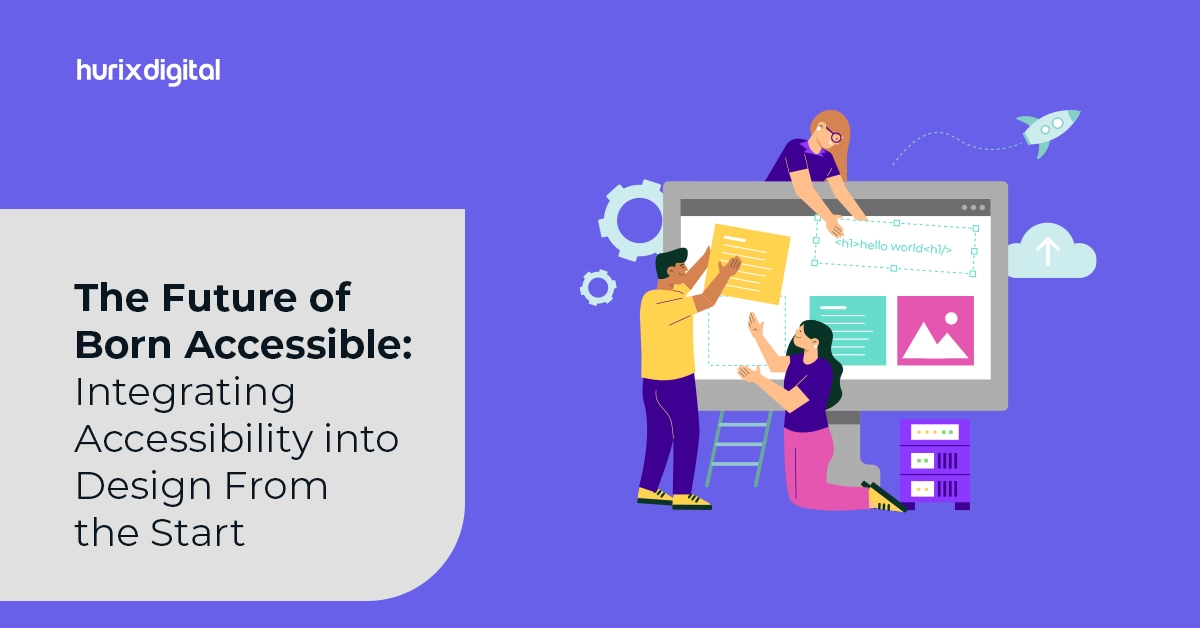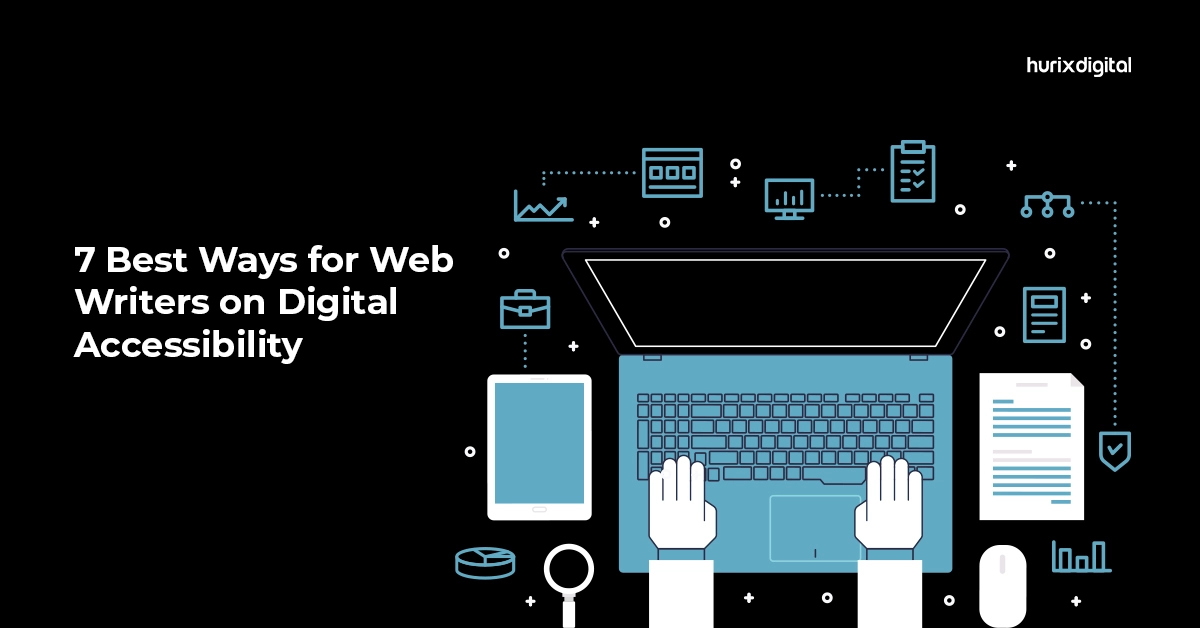
7 Best Practices for Web Writers on Digital Accessibility
Summarize with:
Ensuring that your material is accessible to people is not a recommended practice but an expectation in this modern digital era. Including accessible material on your website can make it easier and more flexible for people of all skill levels.
This article offers web writers 7 best practices for improving online accessibility and guaranteeing adherence to accessibility standards like WCAG guidelines and ADA compliance.
Table of Contents:
- Understanding Web Accessibility
- Best Practices for Accessible Content
- Importance of Accessibility Standards
- Conclusion
Understanding Web Accessibility
The term “web accessibility” refers to creating and building websites that are easy to use for those users who have a disability. This will cover individuals hearing problems, movement disability, memory loss, or vision problems.
A crucial aspect of making a website accessible is ensuring that all users, regardless of their abilities or disabilities, have equal access to content and functions.
The key components of web accessibility include:
- Perceivability: Users must understand the information and UI elements displayed to them. This involves creating easy material for people to see and listen to, producing content that can be presented in several ways without losing any information, and offering text alternatives for non-text content.
- Operability: Navigation and user interface elements need to be effective. It guarantees that all features can be accessed via a keyboard, giving users sufficient time to read and utilize the material to avoid content that might cause seizures by offering navigation, content discovery, and location assistance tools.
- Understandability: The user interface’s functionality and provided information must be clear. This entails ensuring that material is clear and understandable, that web pages will perform predictably, and that users can avoid and fix errors.
- Robustness: Information must be sufficiently robust to be reliably understood by user agents, including assistive technology. This involves utilizing technology in a way that optimizes its compatibility with both present-day and upcoming user tools.
Also Read: The Beginner’s Guide to Accessibility Remediation – What You Need to Know!
Best Practices for Accessible Content
1. Use Clear and Simple Language
All users, including those with mental disorders, find material easier to read when it is written in simple, easy language. Avoid florid words and terminology. Instead, use simple languages that efficiently convey your thoughts.
2. Structure Content with Headings
Using headings properly will help in logical content organization. This arrangement makes the text easy to read and easier for screen readers to navigate. Ensure that headings for each section need to be clear and informative.
3. Alt Text Implementation for Images
This descriptive practice increases your website’s accessibility through image search results, which benefits SEO with accessibility. Using subtitles is vital for people who need visual impairment accessibility.
Users who are visually handicapped can still receive the information through software called screen readers thanks to descriptive captions, which offer a textual substitution for images. Ensure the alt text for each image on your website is relevant and informative.
Using alt text improves the user experience on your website by showcasing your dedication to diversity and guaranteeing adherence to accessibility rules like the WCAG standards.
4. Ensure Keyboard Navigation
People with physical challenges can use keyboards instead of a mouse. Ensure that keyboard navigation is available for all interactive components on your website, including buttons, links, and form fields. This can improve usability worldwide and accessibility on mobile devices.
5. Provide Transcripts for Multimedia
By offering transcripts for audio and video material, you can guarantee that those with hearing problems can read the information. Users who prefer to read instead of watching videos can also benefit from transcripts, which increases accessibility.
6. Use Descriptive Links
For all the users who use screen readers with descriptive link language can enhance the user experience. Avoid confusing phrases like “click here” or “read more.” Instead, you can use descriptive sentences giving background data about the shown material.
7. Test for Accessibility
Check your site for accessibility problems and implement WAVE, Axe, and Lighthouse tools to find and address accessibility issues. To make sure it can work in the actual world, test it with people with disabilities.
Importance of Accessibility Standards
Considering accessibility norms like WCAG guidelines and ADA compliance is essential for several reasons. Initially, it assures legal compliance, reducing legal action and the financial penalties for non-compliance.
Abiding by these rules becomes vital as web accessibility is mandatory in the US under the ADA (Americans with Disabilities Act). An added significant advantage of it is an enhanced user experience. Improved navigation, alt text for photos, and transcripts for multimedia are features offering accessible websites and help users with disabilities.
Using an inclusive approach boosts consumer loyalty and engagement. Making your website accessible will increase the diversity of your audience. Over one billion individuals worldwide are living with some form of disability, making up a vital part of the market.
Making accessibility a top priority enhances your brand’s reputation and fosters consumer trust by demonstrating social responsibility. Standards for accessibility also encourage innovation and help you secure your website. Features like responsive web design enhance mobile accessibility to meet the needs of the increasing number of mobile users. This guarantees that your website will continue to work as technology advances.
Also, available websites frequently get higher search engine rankings. Enhancements to SEO, such as captions, easy-to-read headlines, and descriptive links, increase the exposure of your user-friendly website. Ultimately, following accessibility guidelines is a good legal and commercial move to improve user experience, attract a wider audience, and boost search engine optimization.
Also Read: Accessibility for All: How WCAG 2025 Can Drive Positive Change Within Your Organization
Conclusion
A website that is both inclusive and easy to use must contain accessible information. Web writers may improve their overall usability and compliance with accessibility standards like WCAG guidelines and ADA compliance by following these 7 suggested practices to ensure material is accessible to all users.
Websites that are accessible not only enhance user experience but also attract a wider audience and promote a favorable brand perception. Hurix Digital offers expert services in creating inclusive digital content to improve the accessibility of your website and guarantee compliance.
Hurix Digital ensures your website meets all accessibility requirements with thorough audits and tailored solutions. Book an appointment for expert guidance on creating accessible websites and inclusive digital content. Let Hurix Digital help you design a website that welcomes everyone.
Summarize with:

Vice President – Content Transformation at HurixDigital, based in Chennai. With nearly 20 years in digital content, he leads large-scale transformation and accessibility initiatives. A frequent presenter (e.g., London Book Fair 2025), Gokulnath drives AI-powered publishing solutions and inclusive content strategies for global clients
 A Space for Thoughtful
A Space for Thoughtful 
